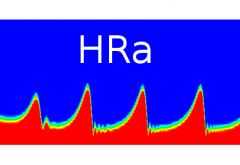Was ist es, was die Welt im Innersten zusammenhält? Die meisten sagen: „Das Geld!“ Ich möchte solchen Ansichten nicht beiwohnen und sage stattdessen: „Quarks und Gluonen!“
Schlagwort: GSI
Farewell to Darmstadt

Another part of my life came to an end in October. Writing about it puts the question in which attitude I do it. I want to write thankfully. In 2009, I came to Darmstadt. First I worked at the Technical University, then at the accelerator GSI. I wrote a monography. For 10 years I took part in the workshop band of Jürgen Wuchner who died in 2020. Eight times I participated in the Jazz Conceptions, a one week summer workshop. I enjoyed the vibrant music scene, especially the concerts at Jazz Institute and at Knabenschule. The Frankfurt Radio Big Band played at Centralstation. Darmstadt also has a Staatstheater (public theatre) with opera. Each summer the Jürgen Wuchner Workshop Band gave a promenade concert in Orangerie Garden if it did not rain. I feel sad that I had to leave friends. Certainly will I return as a visitor.
Supraleitung
Es gibt Materialien, deren elektrischer Widerstand gleich Null ist bei hinreichend niedriger Temperatur. Auch die elektrische Stromdichte und das Magnetfeld dürfen nicht zu groß sein. Im Jahre 1908 gelang Heike Kamerlingh-Onnes (und seinem Labor) die Verflüssigung von Helium, dessen Siedetemperatur bei 4,2 K unter Atmosphärendruck liegt. Dadurch war es ihm möglich, 1911 die Supraleitung in Quecksilber zu entdecken.
Es folgten die Entdeckung von vielen weiteren Supraleitern, später auch Hochtemperatursupraleitern. Letztere haben den Vorteil, dass zu ihrer Kühlung flüssiger Stickstoff (77 K) ausreicht.
Für supraleitende Magnete wird häufig die Legierung NbTi (Niob-Titan) verwendet, deren kritische Temperatur bei etwa 10 K liegt.
Der kältere Teil von Stromzuführungen ist oft aus Hochtemperatursupraleitern (HTS).
Current Leads
Current leads are a cryo-electrical component of the circuit of a superconducting magnet, a pair for each electrical circuit. One end, the warm terminal, has ambient temperature, about 300 K (Kelvin). The other end, the cold terminal, has the temperature of liquid helium, approximately 4 K.
If the cross-section of the conductor is too large, a lot of heat comes from the warm to the cold terminal. On the other hand, if the cross-section is too small, the electrical current will cause a significant heating and the current leads may burn through. The designer has to find a compromise.
There are current leads which are only cooled at the cold terminal. This is the conduction cooled type. The vapour cooled current leads guide the helium vapour all along the whole length from the cold to the warm terminal. Sometimes the temperature is fixed in between with liquid nitrogen (77 K) by the employment of a thermal anchor.
Stromzuführungen
Stromzuführungen sind eine kryo-elektrische Komponente des Stromkreises eines supraleitenden Magneten. Sie treten immer paarweise auf. Das eine Ende wird warmer Terminal genannt und hat die Temperatur der Umgebung, etwa 300 K (Kelvin). Das andere Ende, der kalte Terminal, hat die Temperatur von flüssigem Helium, rund 4 K.
Wenn die Querschnittsfläche des elektrischen Leiters zu groß gewählt wird, wird zu viel Wärme vom warmen zum kalten Ende geleitet. Ist sie dagegen zu klein, so wird die Stromzuführung durch die Joulesche Wärme des elektrischen Stroms sehr heiß und kann durchbrennen. Bei der Konstruktion muss daher ein Kompromiss gefunden werden.
Ist gibt einmal Stromzuführungen, die nur am kalten Terminal gekühlt werden. Hier spricht man von Kontaktkühlung. Andere Stromzuführungen führen den Heliumdampf über die gesamte Länge vom kalten zum warmen Terminal. Dies sind gasgekühlte Stromzuführungen. Man kann auch einen Zwischenpunkt auf der Temperatur von flüssigem Stickstoff, 77 K, halten durch einen sogenannten thermischen Anker.
